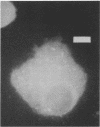Abstract
In humans, infection with Bordetella pertussis is considered to be localized to an epithelial surface. However, an intracellular state in cultured cells and in the macrophages of infected animals has been shown. By using indirect immunofluorescence with a monoclonal antibody, it was found that 3 of 20 bronchoalveolar lavage specimens from children with human immunodeficiency virus infection had B. pertussis associated with pulmonary alveolar macrophages. None of the cultures from the patients grew B. pertussis. The B. pertussis appeared to be intracellular.
Full text
PDF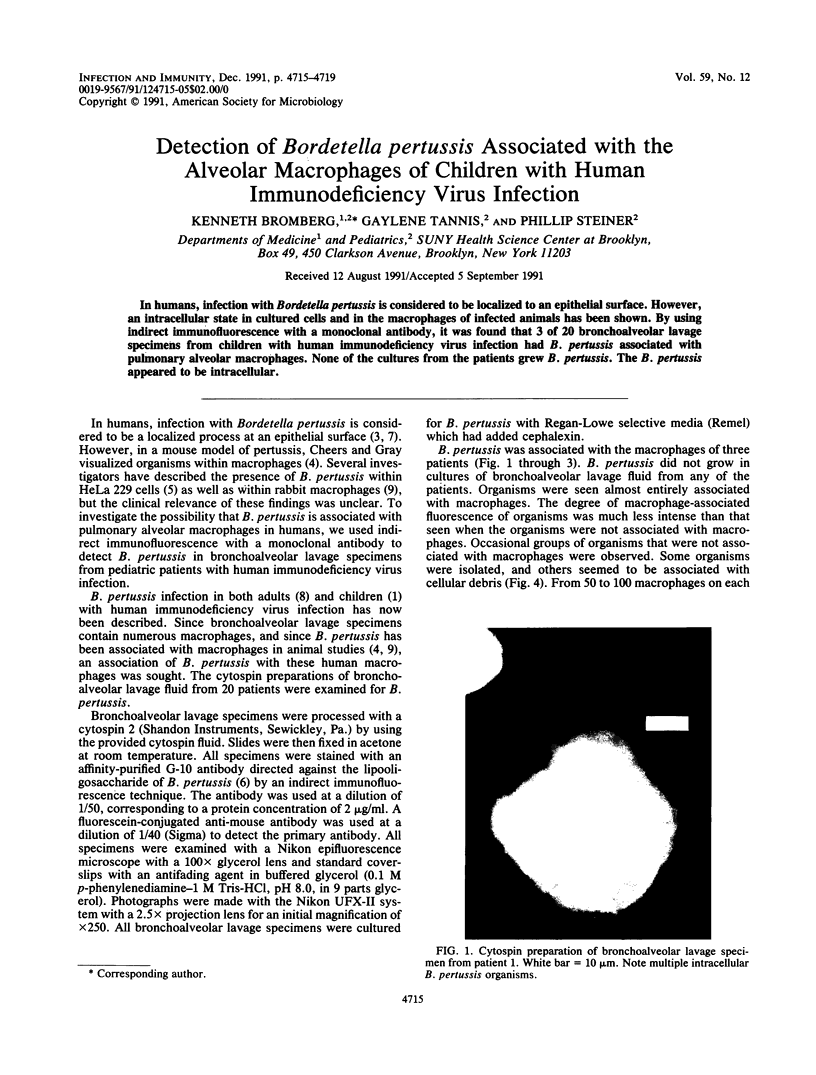
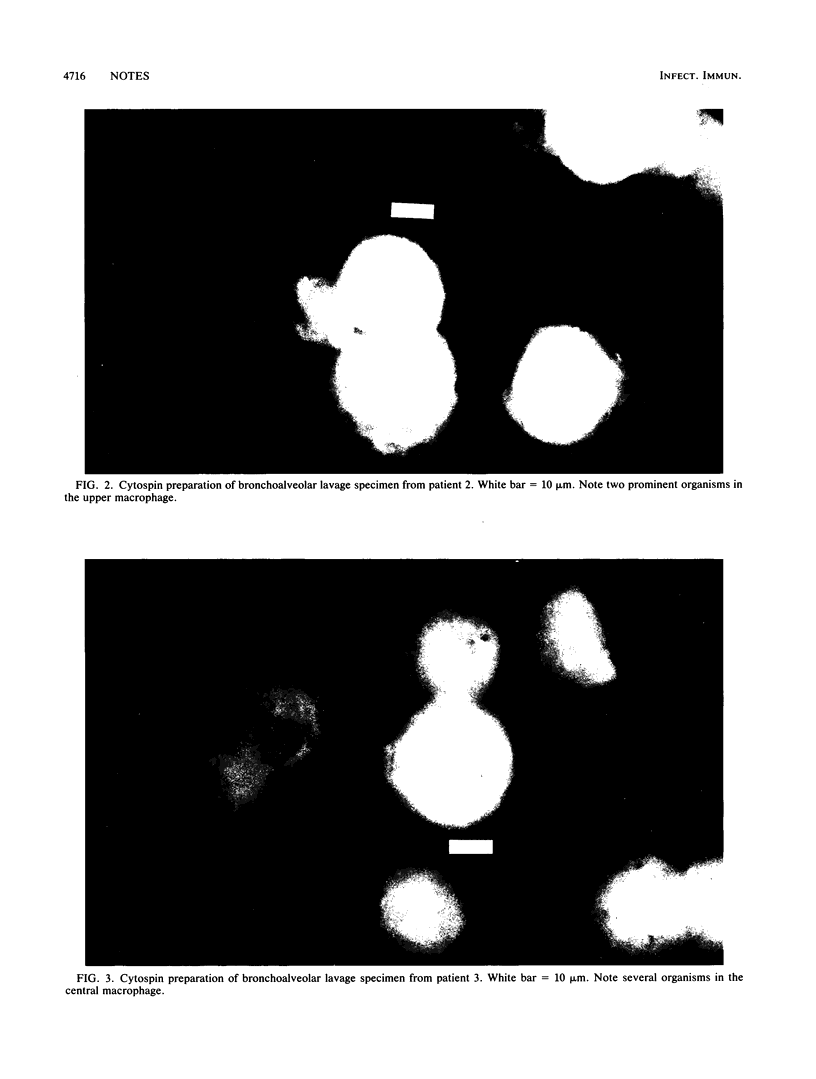
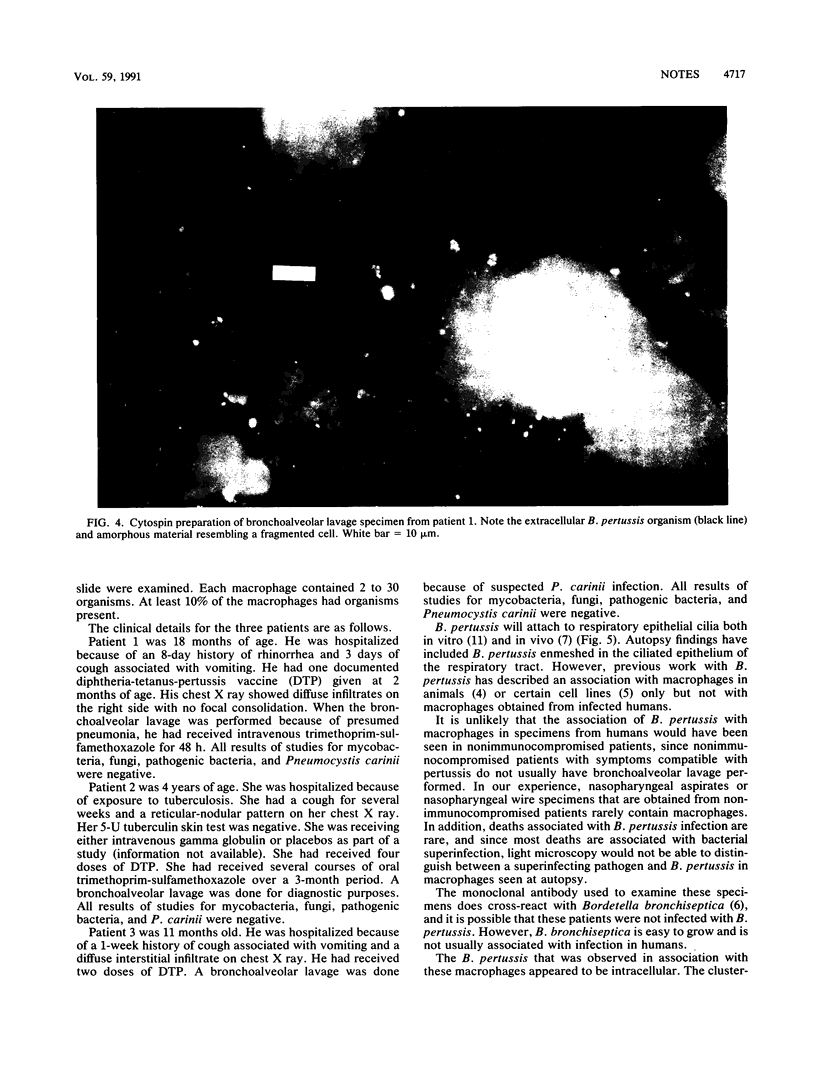
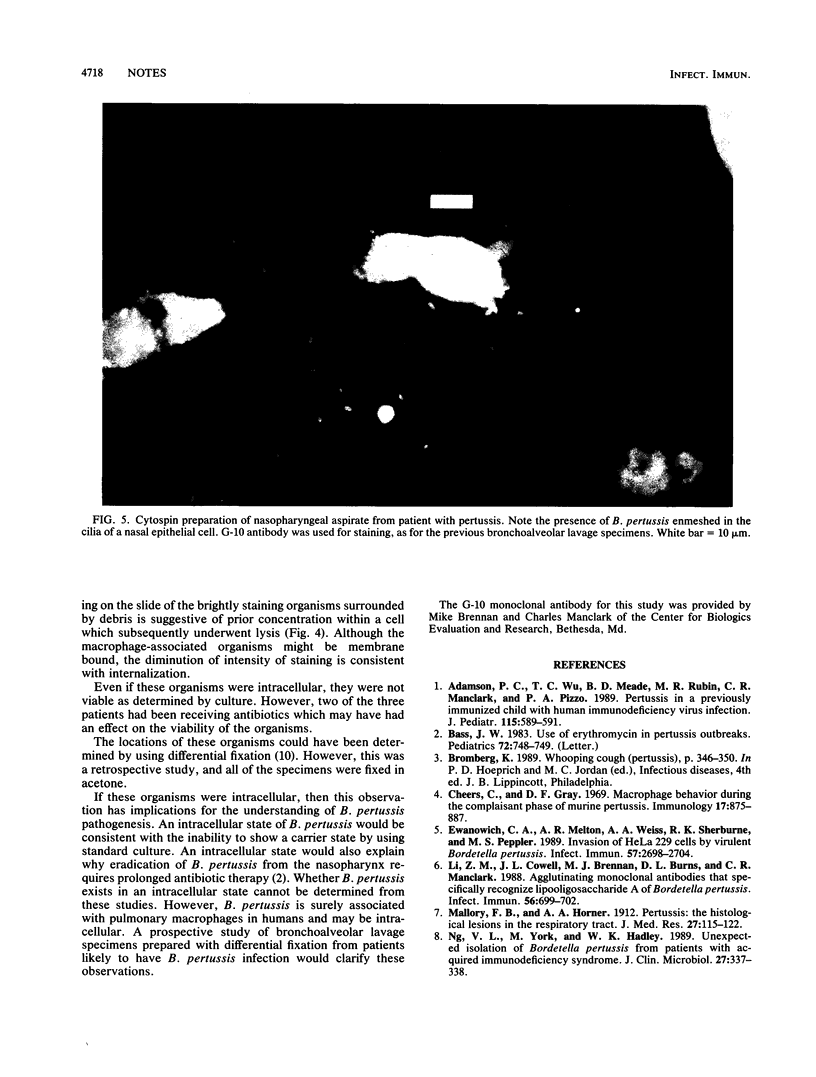
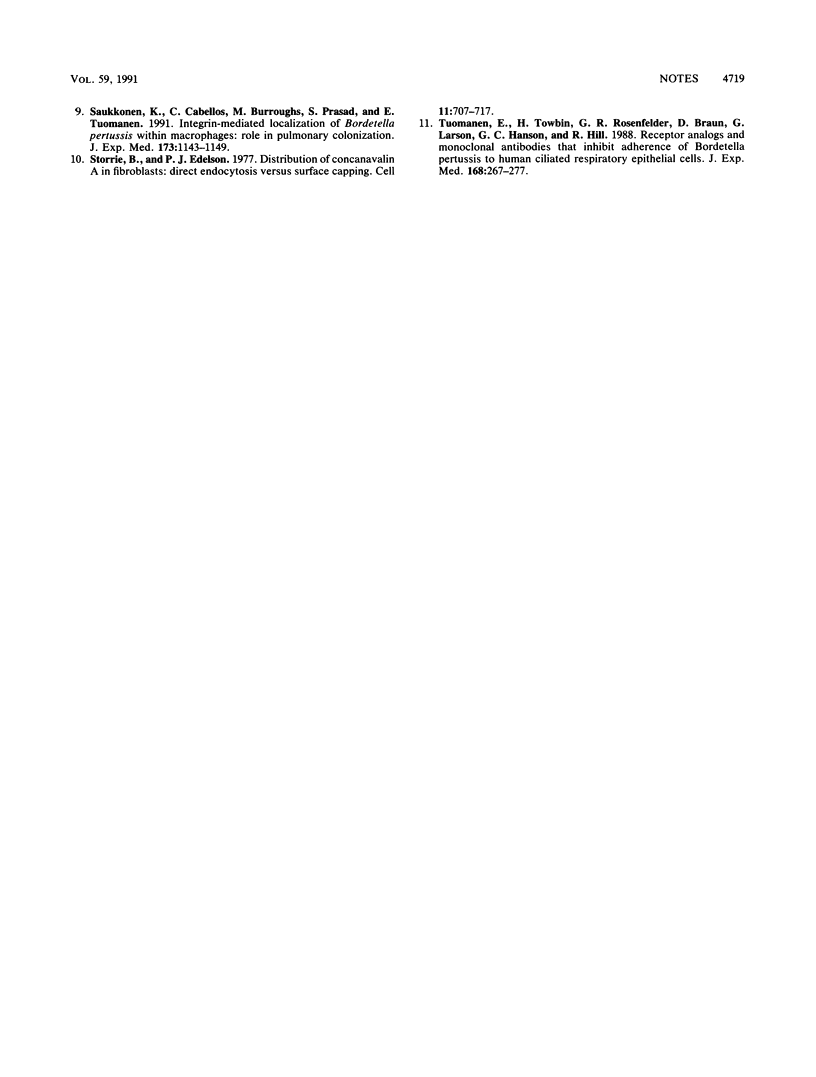
Images in this article
Selected References
These references are in PubMed. This may not be the complete list of references from this article.
- Adamson P. C., Wu T. C., Meade B. D., Rubin M., Manclark C. R., Pizzo P. A. Pertussis in a previously immunized child with human immunodeficiency virus infection. J Pediatr. 1989 Oct;115(4):589–592. doi: 10.1016/s0022-3476(89)80288-4. [DOI] [PubMed] [Google Scholar]
- Bass J. W. Use of erythromycin in pertussis outbreaks. Pediatrics. 1983 Nov;72(5):748–749. [PubMed] [Google Scholar]
- Cheers C., Gray D. F. Macrophage behaviour during the complaisant phase of murine pertussis. Immunology. 1969 Dec;17(6):875–887. [PMC free article] [PubMed] [Google Scholar]
- Ewanowich C. A., Melton A. R., Weiss A. A., Sherburne R. K., Peppler M. S. Invasion of HeLa 229 cells by virulent Bordetella pertussis. Infect Immun. 1989 Sep;57(9):2698–2704. doi: 10.1128/iai.57.9.2698-2704.1989. [DOI] [PMC free article] [PubMed] [Google Scholar]
- Li Z. M., Cowell J. L., Brennan M. J., Burns D. L., Manclark C. R. Agglutinating monoclonal antibodies that specifically recognize lipooligosaccharide A of Bordetella pertussis. Infect Immun. 1988 Mar;56(3):699–702. doi: 10.1128/iai.56.3.699-702.1988. [DOI] [PMC free article] [PubMed] [Google Scholar]
- Ng V. L., York M., Hadley W. K. Unexpected isolation of Bordetella pertussis from patients with acquired immunodeficiency syndrome. J Clin Microbiol. 1989 Feb;27(2):337–338. doi: 10.1128/jcm.27.2.337-338.1989. [DOI] [PMC free article] [PubMed] [Google Scholar]
- Saukkonen K., Cabellos C., Burroughs M., Prasad S., Tuomanen E. Integrin-mediated localization of Bordetella pertussis within macrophages: role in pulmonary colonization. J Exp Med. 1991 May 1;173(5):1143–1149. doi: 10.1084/jem.173.5.1143. [DOI] [PMC free article] [PubMed] [Google Scholar]
- Storrie B., Edelson P. J. Distribution of concanavalin A in fibroblasts: direct endocytosis versus surface capping. Cell. 1977 Jul;11(3):707–717. doi: 10.1016/0092-8674(77)90087-3. [DOI] [PubMed] [Google Scholar]
- Tuomanen E., Towbin H., Rosenfelder G., Braun D., Larson G., Hansson G. C., Hill R. Receptor analogs and monoclonal antibodies that inhibit adherence of Bordetella pertussis to human ciliated respiratory epithelial cells. J Exp Med. 1988 Jul 1;168(1):267–277. doi: 10.1084/jem.168.1.267. [DOI] [PMC free article] [PubMed] [Google Scholar]



